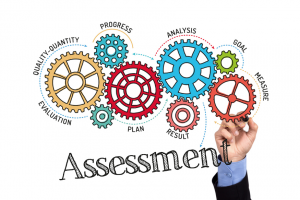
This is the year of hiring! The Great Resignation saw a record 4.5 million Americans quit or change their jobs in November (Washington Post). Many of you are now attempting to fill these positions. Or review changes to current employees’ work assignments, which will lead to more employees leaving due to poor job fit with their new job duties.
It’s important to remember that this is a great time to level up, or your company will be left behind!
Here are 4 often overlooked tips as you move forward in your selection and hiring process. And, remember, when you use a qualified job fit assessment, you will improve your hiring decisions with objective data. If you have any questions or need someone to bounce off ideas, let me know. I’ve been hiring, coaching, training, and managing people for over 30 years.
Keep your word. Recruiters and hiring managers can give your company a bad name. While it may be obvious, there are way too many stories about recruiters and hiring managers not keeping promises. Or, they ghost candidates and/or lie about the job responsibilities. Consider how you treat candidates will impact your sales results and ability to attract top talent.
Can they work remotely? Not all employees are capable of working independently in a virtual environment due to a variety of reasons. Therefore, it’s essential to establish your expectations upfront and design your interview to ask the hard questions.
3 interview questions to get started:
- Why do you believe you would enjoy working in a remote job?
- Have you done this before? If yes, what did you like and dislike?
- Do you prefer working in a hybrid or fully remote position? Why?
Ask about mistakes. While everyone makes them, many job candidates don’t feel comfortable sharing them. But when they share the error and what they did to correct and learn from it, you’ll know they have the confidence and self-awareness needed for your company. If not, they will most likely become your future blamers and complainers.
One example (remember to keep the question open-ended): “Everyone makes mistakes. Please tell me about a recent one and what you did to correct it.”
Most expensive mistake companies make when promoting an employee! Failure to conduct due diligence before promoting employees IS a costly mistake. Avoid this by going through the same interview hiring process as an outside candidate. If you don’t, and they fail, they will leave taking other top talent and top customers. Use a selection process designed to include objective data.
 Jeannette Seibly is The Leadership Results Coach. She has guided the creation of three millionaires and countless 6-figure income professionals. During the past 29 years, she has become an award-winning international executive and family business management consultant, and keynote speaker. Recently, she was able to add another brag. She has been an Authorized PXT Select/PXT Partner with Wiley/Profiles International for 30 years, guiding companies to hire the right person the first time. Have questions? Need help? Contact Jeannette for a confidential conversation.
Jeannette Seibly is The Leadership Results Coach. She has guided the creation of three millionaires and countless 6-figure income professionals. During the past 29 years, she has become an award-winning international executive and family business management consultant, and keynote speaker. Recently, she was able to add another brag. She has been an Authorized PXT Select/PXT Partner with Wiley/Profiles International for 30 years, guiding companies to hire the right person the first time. Have questions? Need help? Contact Jeannette for a confidential conversation.
Being a top influencer in 2022 is a great goal. But now you need to put the right action-plan into place and follow it! Get started today with your FREE copy of Eight Tips to Increase Your Ability to Influence.






 Jeannette Seibly is The Leadership Results Coach. She has been an award-winning executive coach, management consultant, and keynote speaker for over 28 years. Her focus is getting leaders and their teams unstuck and able to achieve dynamic results.
Jeannette Seibly is The Leadership Results Coach. She has been an award-winning executive coach, management consultant, and keynote speaker for over 28 years. Her focus is getting leaders and their teams unstuck and able to achieve dynamic results.